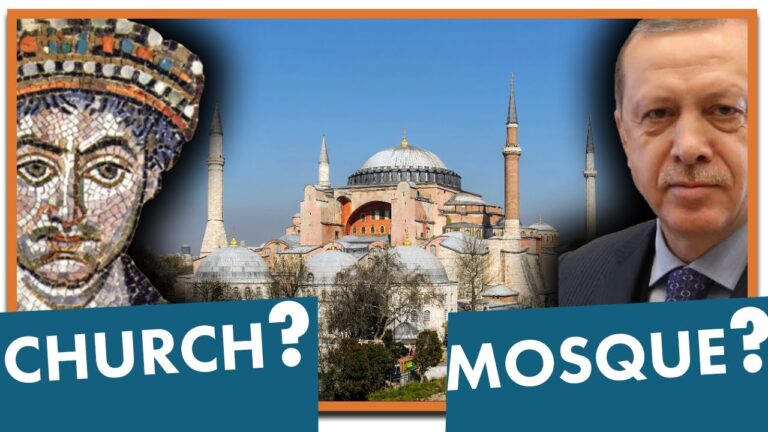The Hagia Sophia, located in Istanbul, Turkey, is one of the most iconic and historically significant buildings in the world. Originally constructed as a Christian church in the 6th century, it has served as both a place of worship and a center of political power for the Byzantine Empire and the Ottoman Empire. While it is now a museum, the Hagia Sophia remains a powerful symbol of both religion and politics.
History of Hagia Sophia
The Hagia Sophia was originally built as a church in 537 AD by the Byzantine emperor Justinian I. It was designed to be the largest and grandest church in the world, and it was seen as a symbol of the emperor’s power and faith. The building was destroyed twice, once in 532 AD during the Nika Revolt and again in 1204 AD during the Fourth Crusade. Both times, it was rebuilt and restored, and it eventually became the center of the Eastern Orthodox Church.
In 1453, the city of Constantinople was conquered by the Ottoman Turks, and the Hagia Sophia was converted into a mosque. It was used as a mosque until 1934, when it was converted into a museum by the Republic of Turkey. Since then, it has been open to the public and is one of the most popular tourist attractions in Istanbul.
Architecture of Hagia Sophia
The Hagia Sophia is an impressive building, and it has been described as “the eighth wonder of the world”. It is an example of Byzantine architecture, with its large dome and four minarets. The interior is decorated with marble, mosaics, and calligraphic inscriptions. The mosaics depict scenes from the Bible, and the calligraphic inscriptions are prayers written in Arabic.
Religious Significance of Hagia Sophia
The Hagia Sophia has been a place of worship for both Christians and Muslims for centuries. For Christians, it is a symbol of the Byzantine Empire and the Eastern Orthodox Church. For Muslims, it is a symbol of the Ottoman Empire and the Islamic faith. As a result, it is seen as a symbol of religious unity and tolerance in Turkey.
Christian Significance
For Christians, the Hagia Sophia is a symbol of the Byzantine Empire and the Eastern Orthodox Church. It is seen as a place of worship, a source of spiritual inspiration, and a reminder of the Christian faith.
Islamic Significance
For Muslims, the Hagia Sophia is a symbol of the Ottoman Empire and the Islamic faith. It is seen as a place of worship, a source of spiritual inspiration, and a reminder of the Islamic faith.
Conclusion
The Hagia Sophia is one of the most iconic and historically significant buildings in the world. It has served as both a place of worship and a center of political power for the Byzantine Empire and the Ottoman Empire. The building is an impressive example of Byzantine architecture, and it is a symbol of religious unity and tolerance in Turkey. As a result, it is a powerful symbol of both religion and politics.


0 Comments